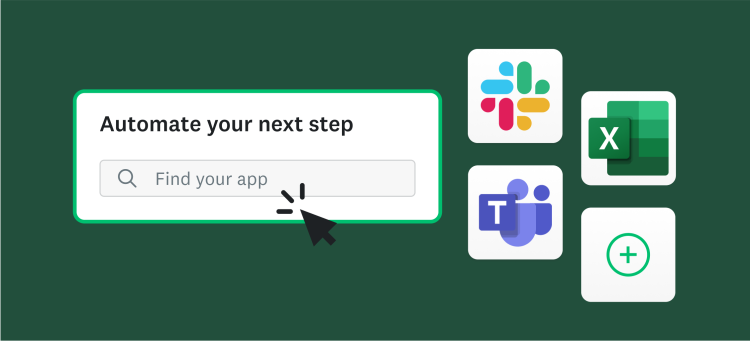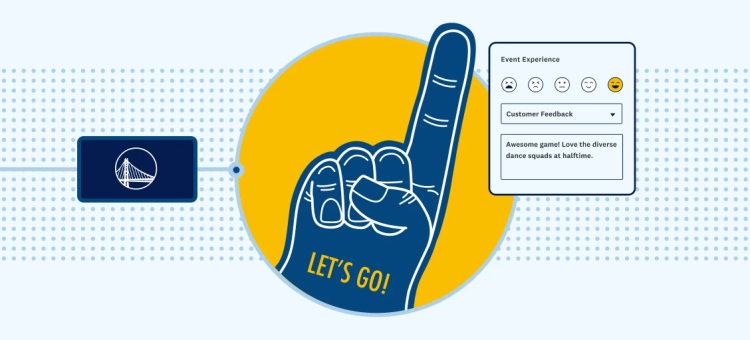This is a guest post from SurveyMonkey partner Automate.io.
Building a unique customer experience is the ultimate goal for any business. When a customer has a smooth experience, there are more chances of conversion. Yet brands often fail to create a frictionless browsing experience because they are unaware of what their customers want. The solution to this problem is taking the initiative to know your customers better. Using online surveys is an effective and proven method for gathering customer feedback and insights, and using this data to create unique end-to-end customer experience.
For years, SurveyMonkey has empowered small businesses and startups to make better decisions and deliver exceptional customer experience using accurate feedback data. And that’s not where it stops, especially when we combine it with the power of automation. SurveyMonkey has in-built APIs and integrations, like those in Connect, to help you expand your business prowess.
Connect is a hub of business apps and integrations built into SurveyMonkey, allowing you to automate workflows and share data with your team. It is a complementary tool to existing integration options, including Automate.io.
Integrate SurveyMonkey with your work apps using Automate.io and see how accurate data can help build a business that thrives on customer demands.
Here are some quick SurveyMonkey automation workflows to help you get more out of your survey data.
1. Sync SurveyMonkey responses with your CRM tool
CRMs and survey software are some of the most iconic duos in the world of work. Together, they help teams build more substantial customer/business relationships.
Integrating online surveys with a CRM system is a great way to get familiar with the preferences and opinions of existing customers. Additionally, the captured insights can help tailor your sales and marketing campaigns for better reach.
You can set up workflow automation to dynamically move survey data into your CRM. So, if there is a new response on your feedback survey, a lead will be created or updated in your CRM system with zero manual intervention.
Benefits:
- Ensure better segmentation of customer data for more targeted sales and marketing campaigns.
Time saved: 56 minutes per week.
2. Get instantly notified of new SurveyMonkey responses
Some surveys are so high-profile that it is necessary to keep everyone on the same page. For example, if you’ve started a feedback survey for a recently launched product feature, you will obviously want your team to be in the loop about the progress of the survey.
Automating response alerts and notifications can save you a lot of time and effort in this case. You don’t have to send manual updates anymore. Instead, you can share survey data with the right people automatically with Connect. With Quick Actions for Slack and Microsoft Teams, you can select and filter data to generate customer reports for a particular use case, see responses from a particular department, or target specific response data.
Benefits:
- Provide teams with the ability to address customer requests promptly with faster, more transparent cross-functional communication.
Time saved: 30 minutes per week.
3. Add customers to a nurturing drip on new SurveyMonkey responses
Using online surveys, you’ve reached your target market and community. Next, you need to enroll your customers in a personalized nurturing experience. And email marketing is the best way to do that.
You can easily integrate SurveyMonkey with tools like Mailchimp, Gmail, and Office 365 and trigger automated customer emails based on their survey responses.
You can create a workflow where a subscriber is automatically added or updated in Mailchimp for every new survey response. You can also trigger an automated ‘Thank you!’ email via Gmail whenever someone completes the survey.
Benefits:
- Keep customers engaged and informed all the time.
Time saved: 60 minutes per week.
4. Create contacts from new SurveyMonkey responses
Do most of your sales and marketing team use spreadsheets or old-fashioned paper address books for contact management? With workflow automation, you can do much better than that.
You can keep contacts updated in Contacts+ without having to copy-paste data from one app to another. Trigger a workflow so that every new survey response in SurveyMonkey adds a new contact to Contact+.
Furthermore, if the contact already exists, you can set a condition to automatically be updated with the latest information without needing any manual data entry.
You can use Connect to automatically add new contacts to Excel. Keep your responses updated easily. Add a workflow to export responses to an Excel worksheet for a secure backup of your contacts.
Benefits:
- Simplify contact management by having easy access to all your contacts and leads in one place.
Time saved: 45 minutes per week.
5. Trigger customer surveys based on activities in other apps
Having too many tools and apps in the arsenal is common among businesses. It often adds complexity to standard processes, but there is an opportunity to offer outstanding experiences when all the apps are in sync.
Check SurveyMonkey APIs to integrate your survey data into other applications. Set up workflows between SurveyMonkey and marketing applications like HubSpot or Marketo to trigger personalized surveys for your prospects and customers.
You can also consider connecting your survey data to popular ecommerce applications like Shopify. Trigger surveys at different stages of the buyer’s journey based on specific user actions.
Benefits:
- Provide customers with a more personalized customer experience.
6. Create tasks from new SurveyMonkey responses
When customers share concerns or requests related to a product or service, the next step is to have a member of your team investigate. To do this, you must sync your survey response data with your task management tool.
If you choose to go by the usual way, you will have to manually create tasks for each response and assign them to the concerned team member, one task at a time. This can be time-consuming!
A more intelligent alternative to this is to create workflows between SurveyMonkey and your choice of task management tools, such as Asana or Trello, to do the same. For example, you can trigger an event where Trello cards are created for survey responses.
Benefits:
- Have a more streamlined view of all the tasks (customer requests) and provide faster resolutions with timely follow-ups.
Time saved: 30 minutes per week.
7. Reward survey respondents for better loyalty
A key factor contributing to good customer experiences is whether or not your brand can make customers feel special. Now, offering a reward in exchange for completing a feedback survey is a great way to go about it.
Such incentivization improves survey response rates and creates a sense of loyalty and trust between a brand and its customers.
SurveyMonkey supports integration with tools like Rybbon, Sendoso, appyReward, and more. That means you can connect SurveyMonkey with any of these apps and send eGifts or digital rewards to customers when they respond to a survey.
Benefits:
- Turn your customers into your biggest advocates by building solid relationships.
8. Leverage social media for customer service
Since we’re talking about providing a great customer experience, it’s essential to take the consumer-preferred channels into account. Yes, that’s social media.
According to a study from Smart Insights, 63% of customers expect brands to provide customer service through social media channels.
If you often use online surveys to open dialogue between you and existing customers, you should consider integrating them with popular social media apps to amplify your reach.
You can trigger events like sending a new tweet on Twitter for a new survey in SurveyMonkey or @mention Twitter followers on survey responses.
And for a personal approach, you can also use Connect’s notification features to alert teams to respond on social media. Your communications team can be notified in Slack or Teams with opportunities to interact directly with social media users to address concerns or capitalize on praise.
Benefits:
- Boost your brand’s online presence and engage with your customers where they are present.
Time saved: 45 minutes per week.
9. Backup survey results as you please
Most businesses today are leveraging cloud services to mitigate the risk of data loss. After all, your data is entirely safe in the cloud, right? Also, it’s relatively safe—as in safer than saving it on a hard drive.
The data you have in the cloud can still be lost for numerous reasons, with user error and unintentional overwrites being the most common ones. The best way out is to reduce downtime in the event of data loss by having a data backup in Google Sheets or OneDrive.
You can trigger a workflow where a new row is added to the selected Google Sheet as soon as a recent survey response is received. You can even perform different actions within the Google Sheets to better analyze the available data and make better decisions. You can also use Connect to automatically export survey responses to Excel spreadsheets, helping teams maintain data.
Benefits:
- Maintain a backup of all your survey data in one place. Sort and share the data as required without the fear of losing any critical information.
Time saved: 30 minutes per week.
Final thoughts
Customers have come to expect more from brands. It certainly puts pressure on businesses to offer end-to-end customer satisfaction throughout the customer journey lifecycle.
Like most small and mid-size businesses today, you’re probably already using online surveys to identify the needs and concerns of customers. But there is much more than you can do for your business and customers with the same data.
The above third-party integration workflows with Connect are a glimpse into how the data from an online survey adds value to different campaigns, informs key stakeholders for fast action, and ensures better customer experiences.
Bonus benefit! You can easily save more than five hours per week by using this seven automation. That means you can have more time for communicating, marketing, and making a profit.



